Himachal
Rafting
White Water Rafting:
Ten Safety Tips

A rafting trip can be a truly exhilarating experience. You feel this huge bubble of excitement building up inside you while hurtling down a river; you clutch the ropes tightly, wait with bated breath while nearing a white water rapid and as your raft rises and falls cutting across a torrent, you — all shaken up and splashed over — let out this loudest scream of your life in sheer joy and excitement. You gather yourself up only to prepare yourself for the next rapid of excitement.
Thousands of people try out rafting in Beas river in Kullu-Manali every year to get that adrenaline rush and to experience the thrills of this adventure sport without, however, completely aware of the dangers involved.
Rafting is fun but it could turn out to be quite risky if the rules of this sport are not followed. Every year, multiple rafting accidents occur in the Beas river and over the years dozens of people have lost their lives for no fault of theirs.
Most recently in April this year, a 32-year-old Mumbai woman drowned in the Beas river near Bhuntar town after the boat she was in capsized. Four others in the same raft had a narrow escape.
So why so many rafting accidents happen and what can you do to have a safe experience?
For this article, the WildCone spoke to a number of experts including Bhuvnesh Thakur, a veteran of rafting in the valley who has been campaigning to make this adventure sport safer. All were of the unanimous opinion that in most cases lives could have been saved if rafting operators had followed the guidelines set by the local administration.
According to Mr Thakur, you don’t have to press the brakes at the first sight of a rafting operator signaling you to stop on the Kullu-Manali highway.
“You have got to be careful and you need to be doubly sure that your life is not at risk before jumping in a raft,” said Mr Thakur.
According to experts, your safety must be your own top concern and you must be aware of all the risk factors involved in rafting and what to do in case you find yourself out of a raft and in a river.
Here I am listing out the top safety tips shared by experts for you to have a safe rafting experience. Hope it helps you.
1. Choose your rafting operator wisely
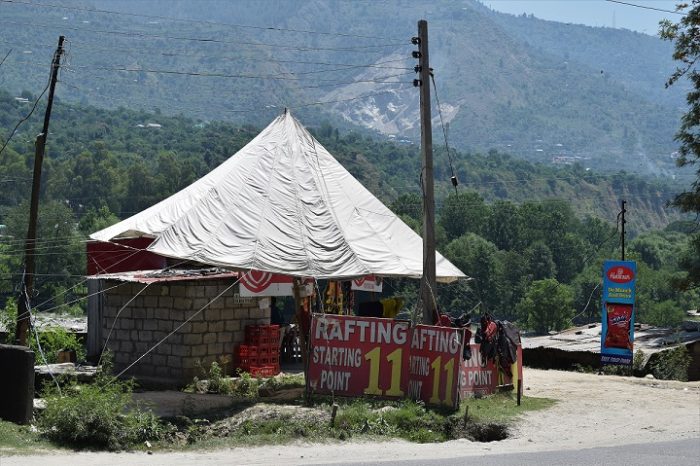
There are three government-recognized rafting stretches in Kullu — Raison to Bandrol (3 kms), Babeli to Vaishno Devi (7 kms), and Pirdi to Jhiri (14 km). But there are close to 100 rafting operators active along the Beas river. You need to do a little bit of research before selecting your rafting operator.
Check their safety records from the internet, ask your friends who have already done rafting in Kullu and then decide the one with the safest track record. Say no if the staff of a rafting operator appears to be casual and non-professional.
2. Check emergency safety measures

According to the guidelines framed by the Kullu district administration, all the operators must send a rescue raft or a rescue kayak along with the main raft to ensure that in case raft capsizes immediate help could be extended.
However, it has been seen that most operators don’t comply with this guideline. Operators also need to have emergency medical services available at the spot. So before selecting an operator, you need to question them about the safety measures and only after you are satisfied with the answers should you say yes to rafting.
3. Check who your raft guide is

It’s important to know who your rafting guide is. You must check whether he is a trained professional or not, how much experience does he have, what kind of safety record he has etc etc.
Your guide is also supposed to brief you about the safety tips before rafting starts. It has been observed in some cases that raft guides were high on charas or alcohol. So you need to be absolutely sure that your rafting guide is a thorough professional with good safety track record and someone who doesn’t appear to be high.
4. Check the safety equipment
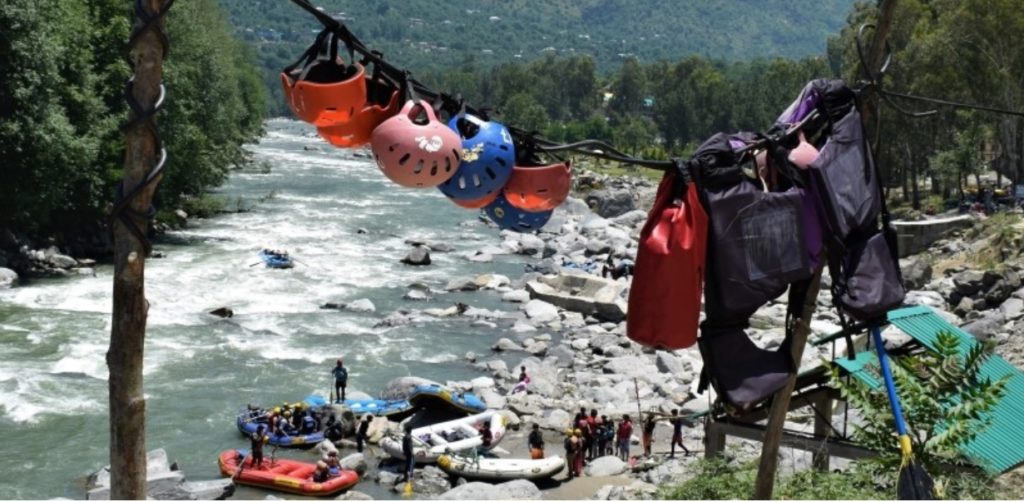
You also must check that the safety gear you will wear including helmets and life jackets are of good quality and meant for white water rafting. According to experts, in case of a raft capsize, a life jacket will keep you floating and a good quality helmet will save your head from rocks in the water. Also, check the quality and the age of the raft.
5. If your raft capsizes, don’t panic
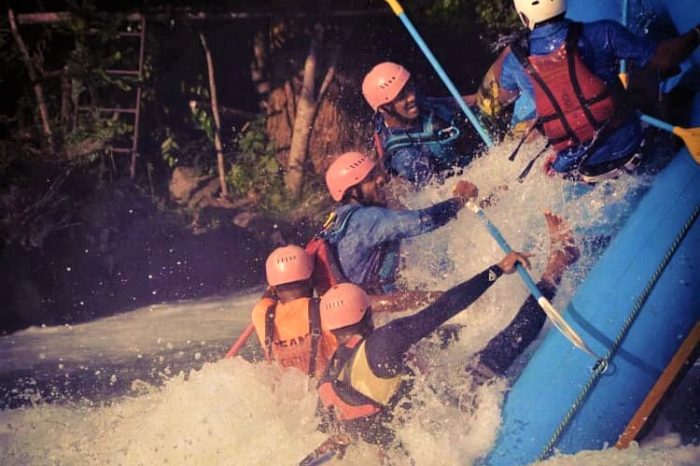
These are the must-follow rules in case your raft capsizes:
(A) Don’t panic, stay calm as you will float and not drown.
(B) Lie on your back. If you are still holding the raft ropes or have been thrown off the raft, lie on your back and never on your chest as this may cause water suffocation.
(C) If water current is pulling you down then you should go legs-first head-last position. This way your head will get protection from the river rocks.
(D) Wait for the rafting guide to throw you a rope. This is the first rescue step a rafting guide is supposed to take — not letting you float away. According to experts, a rescue raft or a rescue kayaker has to be there in case a raft capsizes as a raft guide alone can’t do much.
6. Say no if there are more than 7 people in a raft
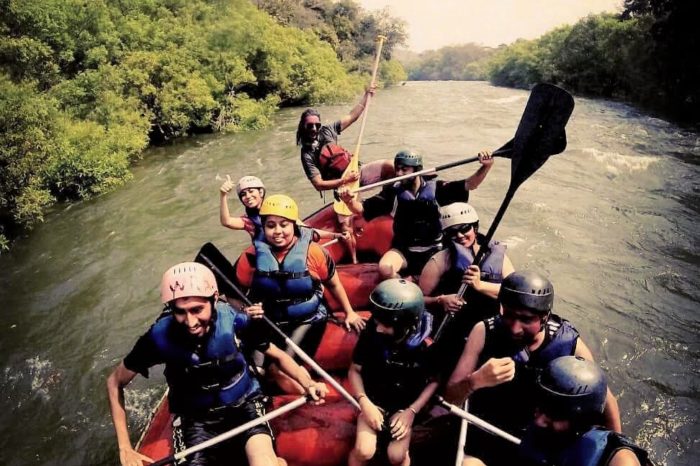
According to the guidelines, there should not be more than seven people in a raft including the guide as loading more people than the raft capacity would make it prone to capsizing.
According to experts, if there are more than seven people, it becomes difficult to maneuver the raft due to increase in the total weight and this might result in a mishap. Sometimes, rafting operators try to have more than seven people in a raft to get the extra bucks but you must say no to this.
7. Avoid if the water level is high or rising

Every year rafting season is closed by the local administration for two months from July 15 to September 15 as the water level starts to rise in the Beas river due to monsoon rains and it becomes dangerous to do rafting in high waters.
However, sometimes water level goes up even when it’s not monsoon season due to heavy and incessant raining. And many a times it has been seen that operators take unnecessary risks and take people for rafting even though the water level is high or when it’s raining.
You must never go for rafting when the water level has risen or if it’s raining continuously for hours. Rafting should be done in a river you know and understand and there is no point taking unnecessary risks.
8. Grab a wet suit
Experts also suggest that since the river water turns quite cold especially October onwards, it’s always safer to go rafting in a wet suit. Although it’s rare that anybody suffered hypothermia after the raft had capsized but still why take any chances.
9. Avoid if you have certain medical conditions
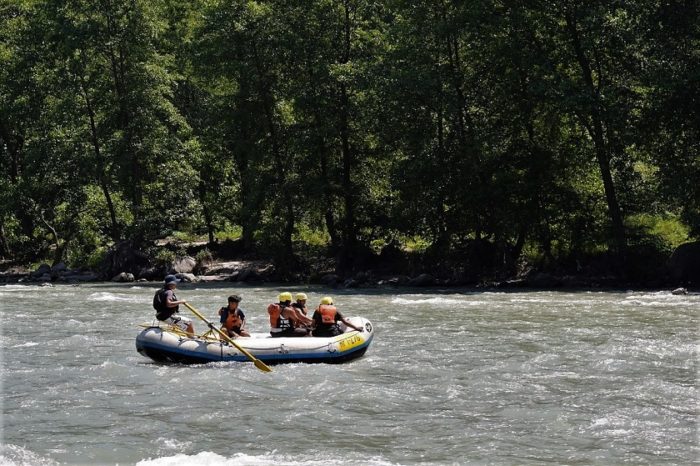
Most safety experts say that if all the safety precautions are taken then you can go rafting even if you don’t know how to swim. But people with certain conditions like for example if they are epileptic, asthmatic or are heart patients, they should avoid rafting. Pregnant women should also avoid rafting.
If you don’t know swimming then you must inform the guide about this fact so that he knows who to take care of first in case of an accident.
10. Don’t go rafting if high
And last but not the least, don’t ever go rafting if you are high on any drugs or alcohol. The no-drug no-alcohol rule not only applies to the raft guide but also to the ones sitting in his raft. Rafting in Kullu has its share of many incidents in which many people, high on drugs or liquor, lost balance while in a raft and fell in the river. I am sure you don’t want to end up like that.





I have done river rafting twice in this year. It was really an amazing experience. Everyone should try at least once in lifetime.